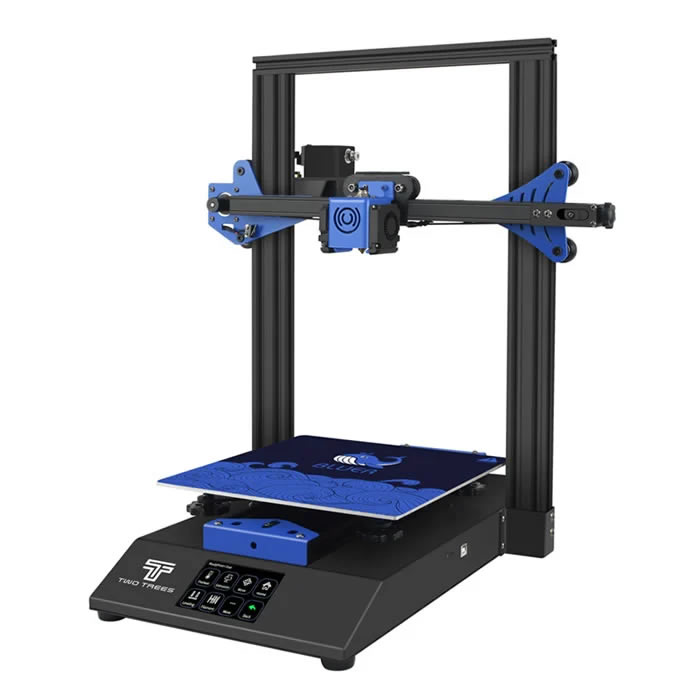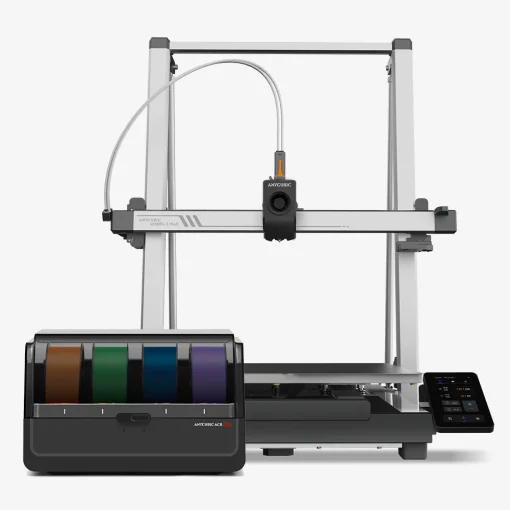Compare Bluer vs Kobra 3 Max Combo
Comparison between the best 3D printers
Choose the best 3D printer at the best price. The cheapest 3D printers are here.
Buy a 3D printer here with 3D Fila.
 |
 |
|
| Model | Bluer |
Kobra 3 Max Combo |
| Printing Material | Filament | Filament |
| Buy Filament for TwoTrees Bluer | Buy Filament forAnycubic Kobra 3 Max Combo | |
| Estimated price | $169,00 | $699,00 |
| Manufacturer | TwoTrees | Anycubic |
| Release Year | 2019 | 2025 |
| Print Volume [mm] | 230x230x280 | 420x420x500 |
| Printer Size [mm] | 400x410x520 | 640x753x706 |
| Weight [kg] | 8 | 23,6 |
| Power Loss Recovery | YES | YES |
| Enclosed printer | NO | NO |
| Bed Leveling | Manual | Automatic |
| Filament End Sensor | YES | YES |
| Bed type | Heated | Heated |
| Power supply system | Bowden | Bowden |
| Standard nozzle | 0,4 | 0,4 |
| Maximum Nozzle Temperature [°C] | 260 | 300 |
| Maximum Bed Temperature [°C] | 100 | 90 |
| Maximum printing speed [mm/s] | 200 | 600 |
| Filament holder | YES | YES |
| Camera for supervision | NO | NO |
| Recommended filaments | PLA, PETG | PLA, PETG, TPU |
| Recommended slicers | Cura, Simplify, Slic3r | Anycubic Slicer, Cura, Orca Slicer |
| Maximum Resolution [mm] | 0,1 | 0,01 |
| Processor | MKS Robin Nano V1.2 + TMC2208 | |
| Display | Touchscreen TFT 3,5'' | Touchscreen 4,3'' |
| Power Supply | 240W | 800 W |
| Connectivity | SD / USB | USB, Wifi |
| Operating systems | Windows, Mac, Linux | Windows, Mac, Linux |
| Date of registration in the system | 2021-09-20 | 2025-03-06 |
| Release date | 2019 | 2025 |
| Extra features | The Bluer offers interesting features such as automatic bed leveling, a 3.5-inch color touchscreen for easy operation, and a filament sensor to prevent print failures. It has a robust metal extruder and a generous 230 x 230 x 280 mm print volume, suitable for a variety of projects. The community mentions improvements made by Two Trees based on feedback, increasing its reliability. | The Anycubic Kobra 3 Max Combo combines high-speed and multicolor printing with up to 8 colors. It features automatic leveling, quick filament switching, clog and entanglement detection, and AI to prevent print failures. Its 800W hotbed heats up quickly, while 10,000mm/s² acceleration ensures efficiency. App and Wi-Fi control, print recovery, and video monitoring enhance the user experience. |
| Support for multiple colors and materials (AMS and CFS) | NO | YES |
Notes * |
||
| Cost-benefit | 7 / 10 | 7 / 10 |
| Hardware | 2 / 10 | 5.4 / 10 |
| Tela | . | . |
| Print volume | 3 / 10 | 4 / 10 |
| Performance | 2 / 10 | 5 / 10 |
Conclusion |
| In comparing the TwoTrees Bluer and the Anycubic Kobra 3 Max Combo, several factors highlight their distinct advantages and potential trade-offs for users considering a 3D printer. The TwoTrees Bluer presents itself as a highly affordable option, making it an attractive choice for beginners and casual users. Its compact print volume, while limited compared to the Kobra 3 Max Combo, is suitable for smaller projects. The printer features a manual leveling system, which is a consideration for users who prefer hands-on control over their setup. Additionally, it incorporates some essential features such as a filament end sensor and a color touchscreen, which enhances usability for its price point. However, it falls short in speed and maximum resolution when compared to the Kobra 3 Max Combo. On the other hand, the Anycubic Kobra 3 Max Combo, although pricier, boasts a significant increase in print volume, speed, and a sophisticated array of features that justify its higher investment. With automatic bed leveling, advanced connectivity options, and support for multicolor printing, it caters to more demanding users and larger projects. The enhanced performance metrics, including a much higher maximum nozzle temperature and printing speed, enable it to tackle a variety of materials and complex designs efficiently. Considering the overall features, the Anycubic Kobra 3 Max Combo is ideal for users who require higher performance and versatility in their 3D printing endeavors, while the TwoTrees Bluer serves as an excellent entry-level option for hobbyists focusing on smaller prints without breaking the bank. Ultimately, the choice between the two depends on the user’s specific needs, budget, and the types of projects they intend to pursue. |

